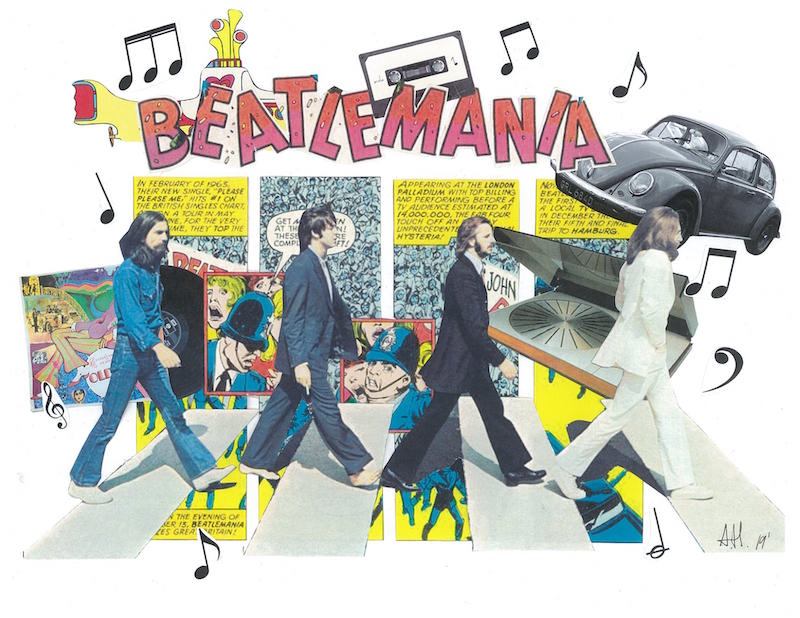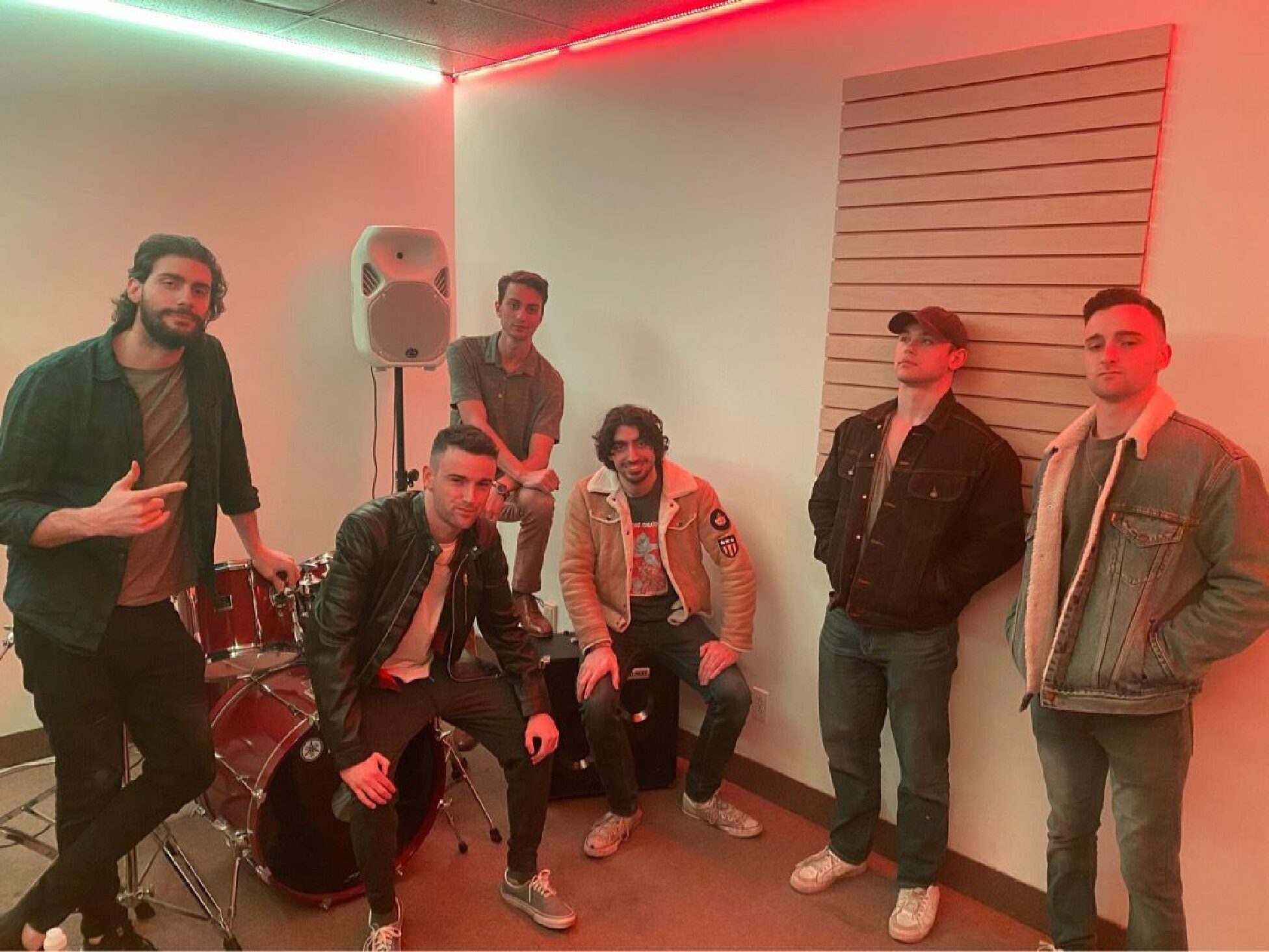The Fab Four’s pride and joy, Abbey Road, celebrates 50 years and remains iconic in the music industry.
I can’t remember consciously falling in love with music until my first year of high school.
Sure, music has always been around in my life. I remember my kindergarten gym teacher handing me a plastic guitar to sing in front of the class when he saw me mouthing the words to “Highway to Hell” at the age of five. I remember my older brother showing me the cover art to Sam’s Town the day it was released in 2006, and enjoying it just as much as The Killer’s first album, Hot Fuss. I remember my dad buying the Guns N’ Roses Greatest Hits and my sister’s love of Bon Jovi in highschool. My mom’s teen crush on Donny Osmond and my grandfather’s man crush on Dean Martin. Music has certainly always been around me, but I didn’t necessarily always care for it.
If I could look back and pinpoint one moment in time when this all changed, it would have to be the first time I listened to The Beatles. Sometime in late 2007, my brother’s friend brought all 12 studio album CDs of the greatest band of all time, along with a few B-sides, to our house to burn onto our computer. After a few long hours of transferring, nearly every song The Beatles had ever released was available on our iTunes library.
Having always had faith in my brother’s taste in music, I took my third generation iPod Nano and plugged it into the computer. “Sync music.” I vividly remember running upstairs to my bedroom, plugging in my earphones, lying on my bed, and pressing play.
Paul McCartney’s “One, two, three, four!” countdown at the beginning of “I Saw Her Standing There” was a metaphorical countdown to my fall into a rabbit hole of rock n’ roll that I would never find my way out of. This song is the first song on the Beatles’ debut studio album, Please Please Me, listed at No. 39 on Rolling Stone’s “500 Greatest Albums of All Time” list.
Front to back, the Fab Four’s back-and-forth transition of John Lennon to McCartney on lead vocals, and from upbeat rock to soothing love ballads was like nothing my 12-year-old self had ever heard before.
“Twist and Shout,” the outro song of the album, made it an absolute no-brainer that I would be spending the rest of my night enthralled in the evolution of The Beatles.
With The Beatles and A Hard Day’s Night delivered just as much as their predecessor. “All My Loving” and “Can’t Buy Me Love” went on to become fan favourites. Through the lyrics and their tone of voice, you could hear the youth and optimism that resided in the band members in their early days. Youth and optimism that had not yet been crushed by the pitfalls of the music industry; riddled with drugs, money, fame and empty promises. Youth and optimism that had not yet felt heartache, heartbreak, divorce, and regret. Youth and optimism that made all their love songs to date ones of glee and hope, as if they truly believed being in love was always a pleasurable experience.
Oh, how quickly things would change.
The Beatles’ fourth and fifth album, Beatles for Sale and Help!, toned down the cheery love songs and added more depth and transparency to their work. Songs like “I’m a Loser” and “You’ve Got to Hide Your Love Away” address fallen love and hardships that the Beatles had experienced with a few more years of musical fame under their belt, as well as being the stars of two movies. Lennon claimed that these songs were written during his “Dylan period,” a time when the band found major influence from American singer-songwriter Bob Dylan, who changed the focus of their songs to a more mature subject matter.
Not enough can be said about Rubber Soul and Revolver, argued by some as two of the strongest albums in the Beatles’ repertoire. Then came Sgt. Pepper’s Lonely Hearts Club Band, proclaimed by Rolling Stone to be the best rock album of all time, calling it “an unsurpassed adventure in concept, sound, songwriting, cover art and studio technology by the greatest rock & roll group of all time.”
By this time, the Beatles had had their fair share of fun; dabbling into hallucinogens. Their mind-altering state was beginning to rub off on their music – evidently for the better. Masterpiece singles like “Lucy in the Sky with Diamonds” and “With a Little Help From My Friends” remain timeless classics that will be sung along to just as loud another half-century from now. Magical Mystery Tour feels like a continuation of the same acid trip.
The Beatles ninth studio album, a self-titled double album often referred to as The White Album, did not halt their momentum. After writing the songs while on a religious retreat away from stardom, the Fab Four returned and released a 30-song album just over a year later. Their transitions between soft melodies and hard rock, all while offering each of the band members a turn at lead vocals, puts every listener on a musical roller coaster.
Abbey Road and Let It Be often get confused as the last albums that the Beatles recorded, although the real timeline doesn’t matter. The two albums were said to be recorded during the band’s “low of all-time” by lead guitarist George Harrison; and were the band’s final hurrah to the world. Both albums are riddled with tear-jerkers and songs of beauty, perhaps some of their most beautiful work ever; “Let It Be,” “Here Comes the Sun,” “The Long and Winding Road.” The lyrics to their songs preach that there is hope for a better world, regardless of the band’s fate.
Despite the cause of Lennon’s death 10 years later, one could still assume that he would continue to stand by his mantra: give peace a chance.
Thank you to The Beatles: for their countless classics, their diverse catalogue, and their lifelong words of wisdom that we could all use every once in a while.
Happy Anniversary, Abbey Road.
Collage by Alex Hutchins




